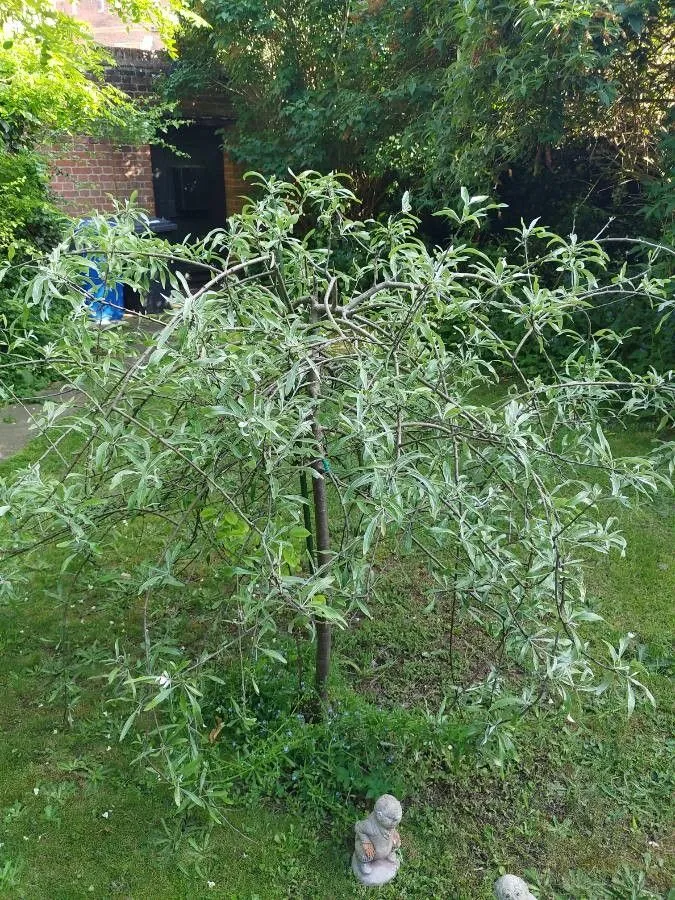
Author: Greene
Bibliography: Pittonia 2: 236 (1892)
Year: 1892
Status: accepted
Rank: species
Genus: Salvia
Vegetable: False
Observations: W. California to Mexico (N. Baja California)
Black sage, known scientifically as Salvia mellifera, is a captivating plant that belongs to the Lamiaceae family. Originally described by Greene in 1892, this member of the mint family boasts a rich history and plays a significant role in its native habitats.
Native to the coastal regions of western California and extending into northern Baja California in Mexico, Black sage thrives in chaparral environments characterized by dry, coastal climates. This region’s unique climate fosters an optimal growing environment for the plant, allowing it to flourish and become a staple of the local flora.
Black sage is a shrub that typically reaches heights between three to six feet. It is renowned for its aromatic leaves and beautiful, whorled clusters of small, tubular flowers that range in color from pale lavender to white. These blossoms peak in the spring, attracting a variety of pollinators, including bees, butterflies, and hummingbirds, making it a valuable plant for promoting biodiversity.
One of Black sage’s notable features is the strong, pleasant fragrance emitted from its leaves and flowers. This aroma not only contributes to the delightful sensory experience of its natural surroundings but also serves practical purposes. The essential oils derived from the plant have been traditionally used in herbal remedies and aromatherapy for their purported benefits, such as soothing respiratory issues and promoting relaxation.
In addition to its ecological and medicinal significance, Black sage has cultural importance as well. Indigenous peoples of the region have long utilized the plant for various purposes, including culinary uses and as a source of natural dye.
As a drought-tolerant plant, Black sage plays a crucial role in stabilizing soils and preventing erosion in its native landscape. It is often incorporated into restoration projects and native plant gardens for this reason. With its hardiness and adaptability, the plant serves as an excellent choice for xeriscaping, allowing homeowners and gardeners to create beautiful, sustainable landscapes that require minimal water.
In summary, Salvia mellifera, or Black sage, is a remarkable plant native to the coastal stretches of western California and northern Baja California. Celebrated for its aromatic properties, ecological contributions, and cultural uses, Black sage stands as a testament to the richness and diversity of the flora in this unique region. Its presence in the landscape is not only a visual and sensory delight but also an essential component of the local ecosystem.
Eng: black sage
Deu: kalifornischer salbei
En: Black sage
Cs: Šalvěj černá
De: Kalifornischer Salbei
Taken May 21, 2019 by Dzik (cc-by-sa)
Taken May 21, 2019 by Dzik (cc-by-sa)
Taken Oct 23, 2019 by Lyncho Lyncho Ruiz (cc-by-sa)
Taken Jul 28, 2020 by Elle Dimitrivich (cc-by-sa)
Taken Jan 30, 2022 by maria (cc-by-sa)
© copyright of the Board of Trustees of the Royal Botanic Gardens, Kew.
© copyright of the Board of Trustees of the Royal Botanic Gardens, Kew.
© copyright of the Board of Trustees of the Royal Botanic Gardens, Kew.
Taken May 23, 2015 by EOL − nicoleamazon (cc-by-nc)
Taken Nov 6, 2022 by Taylor Templeton (cc-by-sa)
Taken Apr 15, 2021 by julia higgins (cc-by-sa)
Taken Apr 14, 2021 by Liz Pucket (cc-by-sa)
Taken Apr 23, 2020 by Brett Johanson (cc-by-sa)
Taken Sep 13, 2019 by gustave pantalacci (cc-by-sa)
Taken Apr 15, 2014 by EOL − Gena Bentall (cc-by-nc)
Taken Apr 8, 2014 by EOL − Gena Bentall (cc-by-nc)
Taken Apr 6, 2014 by EOL − dackerly (cc-by-nc-sa)
Taken Apr 6, 2014 by EOL − dackerly (cc-by-nc-sa)
Taken May 21, 2019 by Dzik (cc-by-sa)
Taken Oct 19, 2015 by EOL − Jesse Rorabaugh (cc-by)
Taken Oct 22, 2014 by EOL − Keir Morse (cc-by-nc-sa)
Taken Oct 22, 2014 by EOL − Keir Morse (cc-by-nc-sa)
Taken Oct 22, 2014 by EOL − Keir Morse (cc-by-nc-sa)
Taken Nov 29, 2015 by EOL − Jesse Rorabaugh (cc-by)
Taken Jun 26, 2015 by EOL − Cedric Lee (cc-by-nc-sa)
Taken Mar 29, 2015 by EOL − Barry Breckling (cc-by-nc-sa)
Taken May 3, 2014 by EOL − qress (cc-by-nc)
Taken Nov 19, 2013 by EOL − Tatiana Zavala (cc-by-nc)
Growth habit: Shrub, Subshrub
Family: Myrtaceae Author: (F.Muell.) K.D.Hill & L.A.S.Johnson Bibliography: Telopea 6: 402 (1995) Year: 1995 Status:…
Family: Rubiaceae Author: Pierre ex A.Froehner Bibliography: Notizbl. Bot. Gart. Berlin-Dahlem 1: 237 (1897) Year:…
Family: Sapindaceae Author: Koidz. Bibliography: J. Coll. Sci. Imp. Univ. Tokyo 32(1): 38 (1911) Year:…
Family: Asteraceae Author: A.Gray Bibliography: Pacif. Railr. Rep.: 107 (1857) Year: 1857 Status: accepted Rank:…
Family: Fabaceae Author: Medik. Bibliography: Vorles. Churpfälz. Phys.-Ökon. Ges. 2: 398 (1787) Year: 1787 Status:…
Family: Aspleniaceae Author: (Cav.) Alston Bibliography: Bull. Misc. Inform. Kew 1932: 309 (1932) Year: 1932…